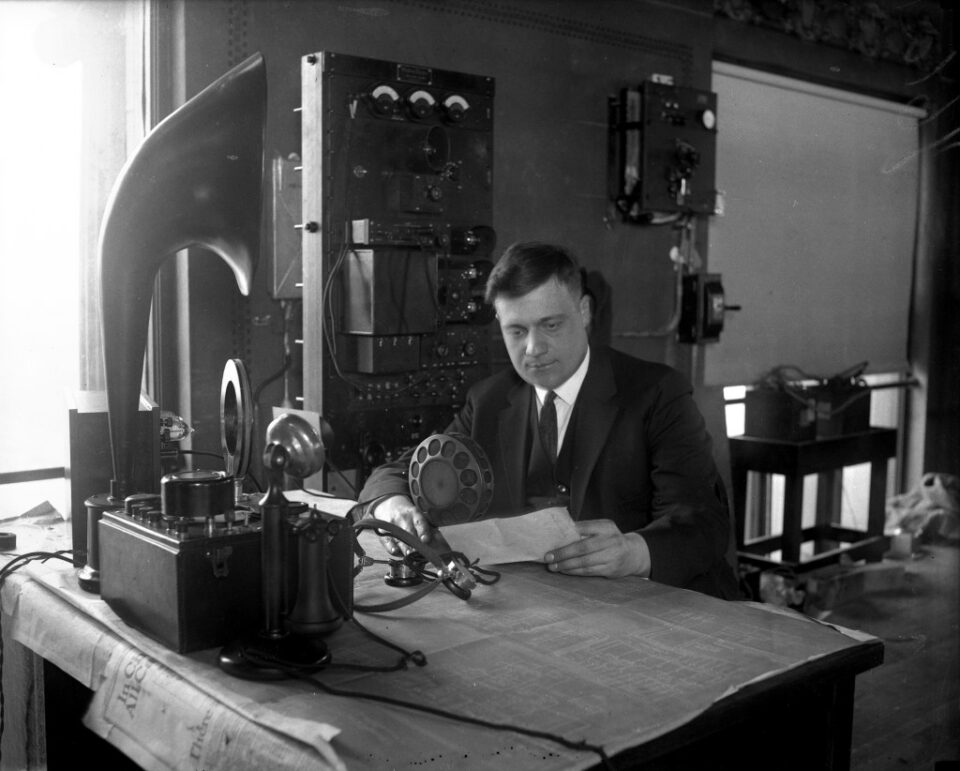The year 1924 was a memorable one in Chicago. Construction of Soldier Field was completed. Two wealthy University of Chicago students committed what they called “the perfect murder.” And a company that initially just sold watches branched out — to the ire of its competitor the Tribune-owned WGN (“World’s Greatest Newspaper”) — to find a new audience.
Sears became a broadcasting pioneer when it launched radio station WLS 100 years ago. The call letters stood for “World’s Largest Store,” a moniker Sears earned from its massive headquarters and mail-order plant in Chicago’s Homan Square neighborhood, where the radio studios were initially located.
Sears timeline: Rise, fall and restructuring of a Chicago icon over 130 years
Catering to the rural customer base of the Sears catalog, early program offerings included “National Barn Dance,” which became a long-running staple on the station and an influential force in country music. Sears sold WLS to Prairie Farmer magazine in 1928, but the legacy call letters have endured through multiple owners and formats.
Here’s a look back at major milestones for the station, which is currently owned by Atlanta-based Cumulus Media, as it begins its second century in operation.
April 12, 1924: WLS signs on the air with a train whistle
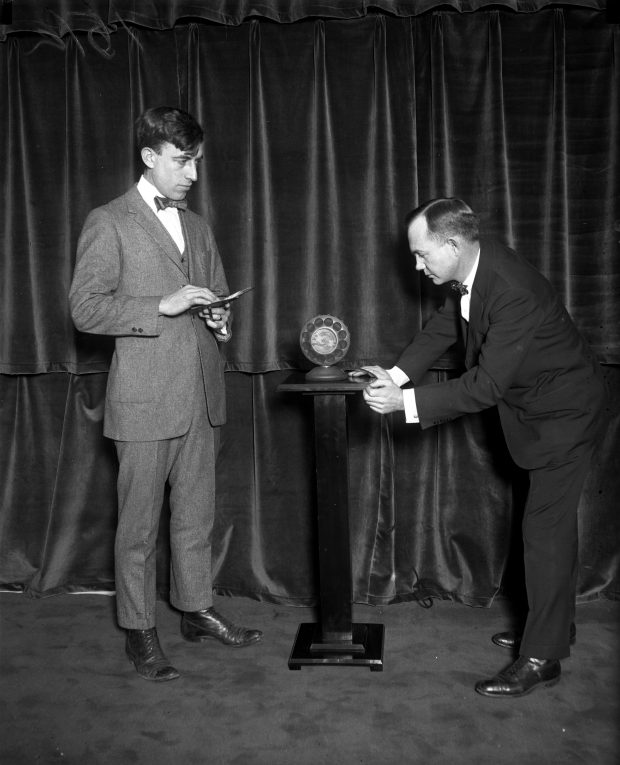
After several days of trial broadcasts, WLS joined the airwaves. The station took as its motto, “Bringing the world to the farm.” WLS’ founder, Sears, Roebuck and Co., was already doing that with its mail-order catalog. It provided access to consumer goods to households many, many miles from a department store. The call letters WLS stood for “World’s Largest Store.”
Sears was the Amazon.com of the 20th century
So it should have been a no-brainer for WLS to play music that strongly appealed to rural customers of Sears goods. Yet Sears executives were initially leery of country music.
April 19, 1924: ‘National Barn Dance’ debuts
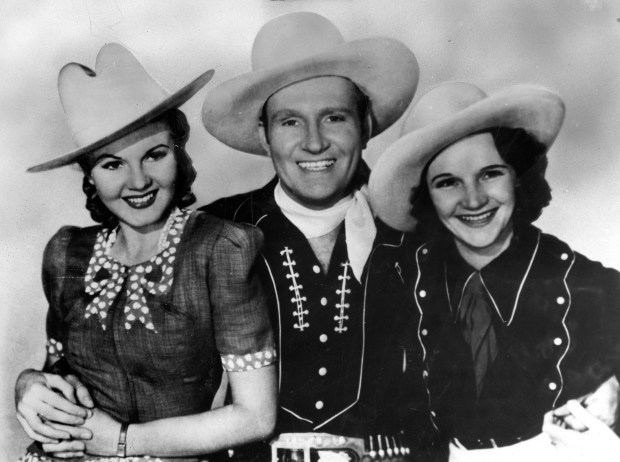
Country music as a business (now a massive, national operation) can arguably be said to have been born in 1924 in none other than Chicago. With the establishment of the show, a live country music radio broadcast, it jumped onto the radio airwaves of urban and northern America — 18 months before its brainstorming founder, newspaperman George D. Hay, exited Chicago to establish Nashville’s even more famous Grand Ole Opry.
Myriad letters, telegrams and phone calls greeted the inaugural broadcast.
From 1924 to 1960, WLS blasted its 50,000-watt clear channel signal across the Midwest and Great Plains every Saturday night, first from the Sherman Hotel at Randolph and Clark streets and then from the 8th Street Theatre on the Loop’s southern edge (now the site of the Hilton Chicago International Ballroom).
“The programming was distinctly nostalgic, referencing a simpler, bucolic past that was a fast-fading memory for many listeners,” Tribune music critic Greg Kot wrote in 2000.
New book captures 100 years of folk and country music history here in Chicago
Corny jokes were told, cow bells were rung after each performance, and national stars were made, among them Gene Autry, George Gobel, Lulu Belle and Scotty (Wiseman), Pat Buttram, Rex Allen, Red Foley and Patsy Montana.
During the April 30, 1960, broadcast, Bob Atcher stepped up to a WLS microphone. Famed for singing “You Are My Sunshine,” he announced the “Barn Dance’s” death at the age of 36:
“This show as you know was, up until tonight — and it will still hold the record for quite a while before any other show can catch up to it — was the oldest, the longest continuously broadcast program of any kind anywhere in the world.”
October 1928: Station sold, but farm focus continues
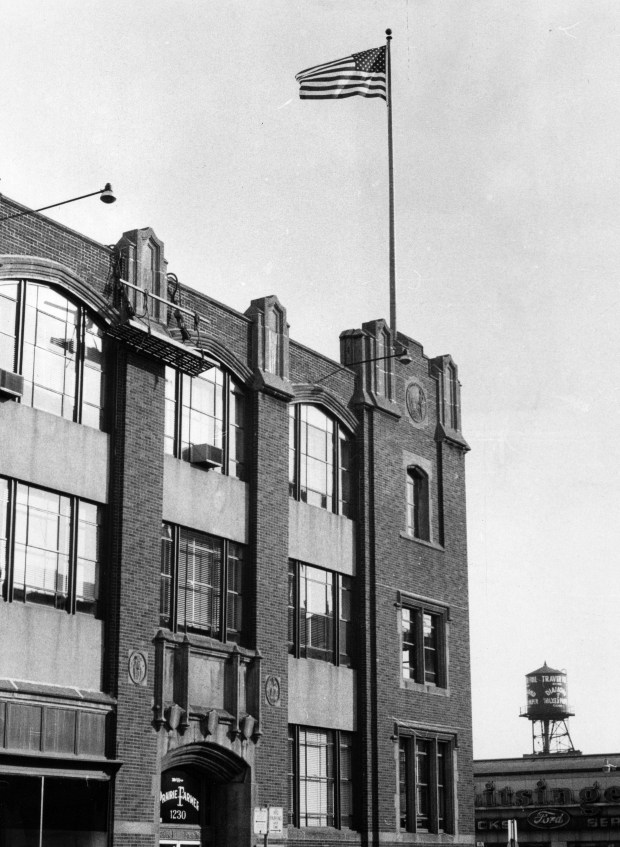
Prairie Farmer, an agriculture trade magazine that was established in Chicago in 1841, bought WLS from Sears-Roebuck. That’s when station boss Burridge D. Butler called it the Prairie Farmer station.
To Chicago, it will always be Sears Tower: Retailer’s legacy lives on, no matter what happens
American Broadcasting Company-Paramount Theaters, which was half owner of WLS, bought the rest of the station along with Prairie Farmer and two other farm publications for $6 million on Nov. 18, 1959.
May 6-7, 1937: ‘Oh, the humanity!’
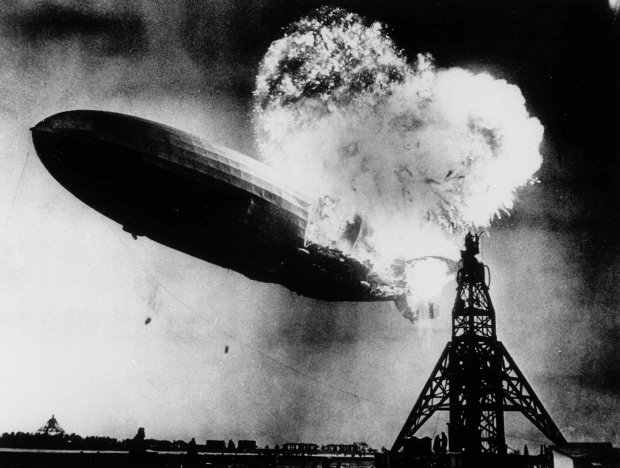
WLS reporter Herbert Morrison recorded a dramatic, on-the-scene account of the crash of the Hindenburg, a German zeppelin, at Lakehurst, New Jersey.
Millions heard his tear-filled account of the explosion, the fire and people falling from the sky. He cried: “Oh, the humanity! … All the passengers … I don’t believe it!”
Most people assume Morrison’s words were broadcast live, but they were first aired the next day when a recording disc was played. It was played again the following night. Another misimpression involves Morrison’s voice, which seems excited and high-pitched. But experts believe the recording speed was off, masking the fact that Morrison had a rather low voice.
The Tribune reported later that German employees at the terminal, worried that the disaster would harm the image of Nazi Germany, tried to impound the recording equipment. “I managed to distract them while Charles (Nehlsen, WLS engineer) gathered up the equipment and ran out of the building with it,” Morrison said. “We literally had to hide out until American Airlines could provide us with a plane later that night. We took off for Chicago from a remote corner of the airport.”
MAY 6, 1937
The Hindenburg carried 36 passengers and a crew of 61 on its last flight. Four passengers were men from Chicago; three would survive. The 36 who died that day included 13 passengers, 22 crew members and a sailor on the ground who manned the docking lines.
The exact cause of the explosion has never been determined, but in looking back from today’s vantage point, it’s easy to be puzzled about why anyone would want to ride in what seems now to have been a death trap and to be struck by the geopolitical circumstances that contributed to the catastrophe.
The Loop explosion of the Wingfoot Express blimp
An explosion and crash of an airship — The Wingfoot Express — in Chicago’s Loop in 1919 had already awakened this country to the perils of hydrogen.
May 2, 1960: Rock format rolls in
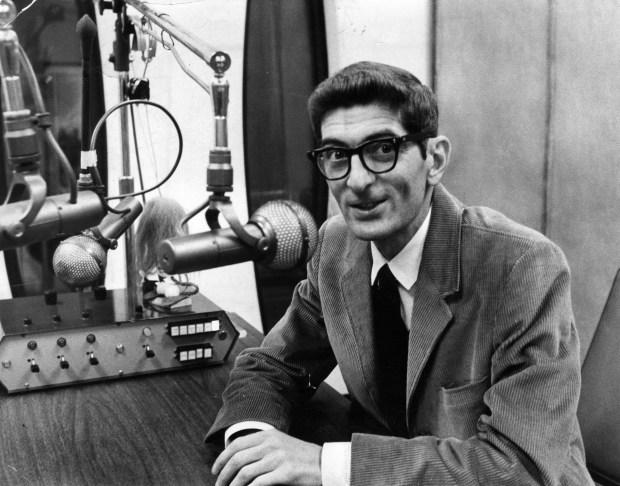
Dick Biondi, Jim Dunbar, Gene Taylor, Mort Crowley, Art Roberts, Sam Holman, Clark Weber and Bob Hale — these were the deejays who dominated the airwaves in Chicago of the early 1960s. Still in their mid-20s, they had come to WLS, and by forging a new and dynamic rock ‘n’ roll sound, they changed virtually overnight the face of local radio and turned WLS from a stodgy outlet for prairie farmers to one of the most popular stations in the Midwest.
The new adventurous sound became known as the Big Beat, and it reached out to the burgeoning youth population, which readily adopted the music as its own.
Dick Biondi appreciation: The Chicago DJ was the soundtrack for a generation
Personality radio reigned as the deejays’ free-wheeling styles reflected the freshness of rock, and sometimes it was the deejay who could make or break a song.
In the years to come another generation of deejays came to Chicago — Larry Lujack toward the end of the 1960s, and later Bob Sirott, John Records Landecker, Steve Dahl and others.
Feb. 8, 1963: The Beatles played on air for the first time in the U.S.
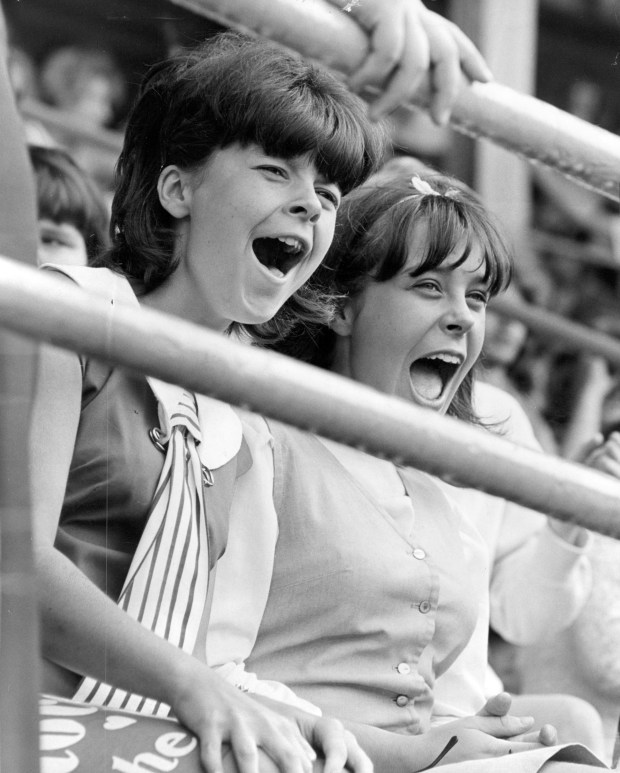
Biondi, whose 9:30 p.m.-midnight show commanded a 60% share of all listeners (translating to millions of teenage ears in 38 states and Canada), was the first disc jockey to play a song by the Fab Four on American radio. The song: “Please Please Me.”
Fab 4 mania: Beatles in Chicago
Two years later, the band played before more than 50,000 screaming teenage fans at Comiskey Park. Weber was often asked what it was like for him to introduce them that day.
He would say a variation of what he once told a reporter: “The crowd went crazy because they knew what was coming. There were about 38,000 screaming teenage girls and the sound was indescribable. I could feel the vibration in my fingers. I don’t think anyone in the ballpark heard a single second of the show. I was standing right next to the stage and I didn’t hear it.”
April 29, 1983: ‘I guess I lost it’
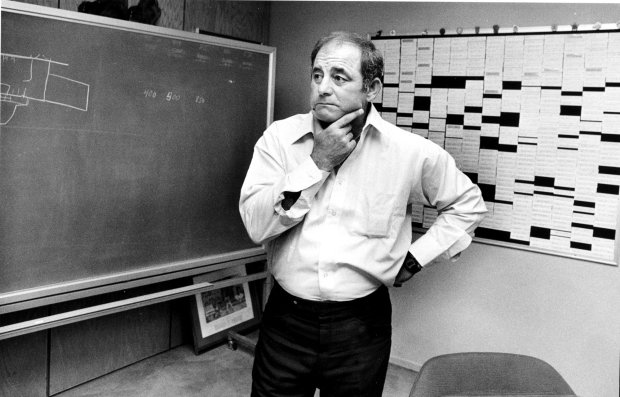
“I guess I lost it,” Chicago Cubs manager Lee Elia told reporters April 29, 1983, hours after he made an epic rant ripping the team’s fans — a three-minute tirade peppered with more than 50 profane words including 30 “F-bombs.”
Only a few reporters were present when Elia delivered the diatribe, but it soon became legendary after then-WLS personality Les Grobstein captured it in full on his tape recorder.
Elia call a tough one
As the Tribune would later point out, Elia used four-letter words, 10-letter words and 12-letter words.
“It sounded like I was cursing the entire Cub kingdom,” Elia told the Tribune in 1987. “But that’s not true.”
Dec. 3, 1985: Studio not big enough for Larry Lujack and Steve Dahl
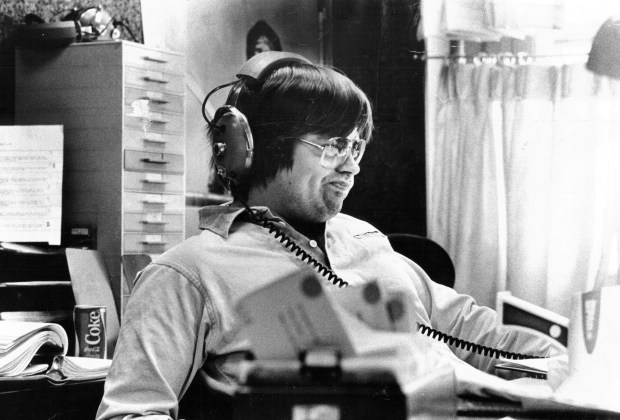
After clashing for months, Lujack, tired of taunting from Steve Dahl, entered Dahl’s studio in December 1985 and confronted Dahl and partner Garry Meier.
The on-air exchange between the two went like this:
Lujack (to Grobstein): “Do you love me?”
Dahl: “Larry, please don’t interrupt us.”
Lujack: “There really are a lot of lies on this show.”
Dahl: “If you want to do this, do it on your own show. Larry, really, just get out. Either that or I leave.”
Lujack: “I want to see if you can break my leg before I ram your head against the wall. (Dahl and his associate Garry Meier leave). Hey, Steve, can’t you take a joke? Can’t you take what you’ve been dishing out for the last five years?”
After Dahl and Meier left the studio, Lujack had to do the rest of their show.
Aug. 23, 1989: The day the music died
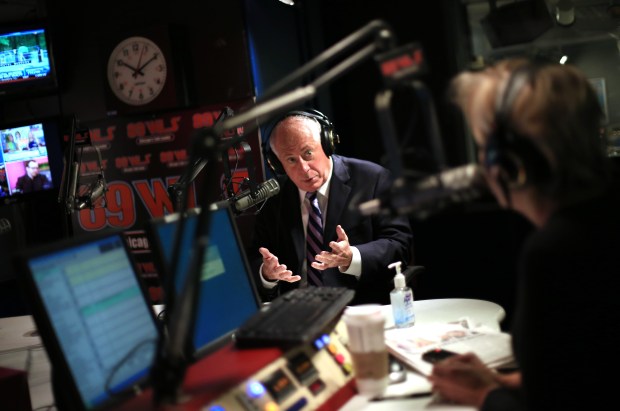
The station dumped its tired adult contemporary music format and introduced its audience to an eclectic lineup of Chicago-based and syndicated talk talent — including Sally Jesse Raphael and Rush Limbaugh — who pushed and probed the corners of the envelope. The station’s management bet the style would become the standard for Chicago talk radio.
10 things you might not know about Chicago radio
WLS-FM began simulcasting the AM’s station’s issue-oriented talk programming in October 1991.
Oct. 27, 2008: ‘WLS scares the hell out of me’
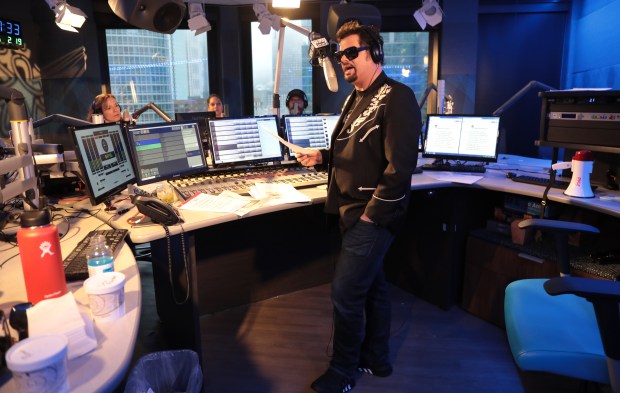
Erich “Mancow” Muller — who hosted “Mancow’s Morning Madhouse” on WRCX-FM in the 1990s — took over the station’s 9-11 a.m. slot.
Muller had said he hoped to distance himself from his shock-jock past. But he continued to court controversy at WLS-AM in a variety of attention-grabbing ways, such as an on-air waterboarding stunt that resulted in him reversing his opinion and deciding the tactic constituted torture.
Spending an on-air morning with Mancow Muller, now an old pro of Chicago radio: ‘If I’m bored, I move on’
Muller was 86ed by the Big 89 in 2010. He returned to the station in 2019 but departed again in 2020.
He broke the news to media columnist Robert Feder, saying, “Much of the enjoyment I had left doing radio has been sucked out of it. Alone in an office building with no guests and endless rules is not my idea of a creative process.”
Today, “The Steve Cochran Show” airs from 5:30-9 a.m. weekdays and Brett Gogoel hosts “PM Chicago” 4-5 p.m. weekdays on WLS. The station also airs nationally syndicated shows.
Want more vintage Chicago?
- Become a Tribune subscriber: It’s just $12 for a 1-year digital subscription
- Follow us on Instagram: @vintagetribune
- And, catch me Monday mornings on WLS-AM’s “The Steve Cochran Show” for a look at “This week in Chicago history”
Thanks for reading!
Join our Chicagoland history Facebook group and follow us on Instagram for more from Chicago’s past.
Have an idea for Vintage Chicago Tribune? Share it with Ron Grossman and Marianne Mather at [email protected] and [email protected]
Kori Rumore, Marianne Mather , 2024-04-11 21:00:29
Source link
